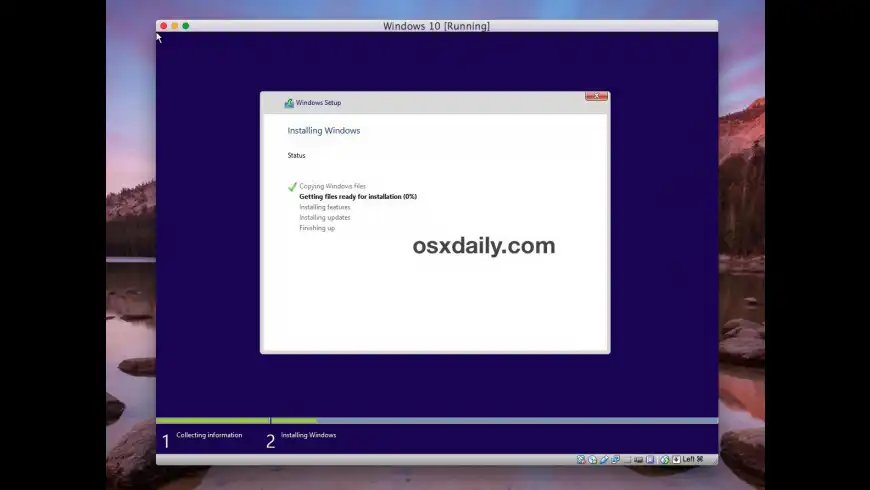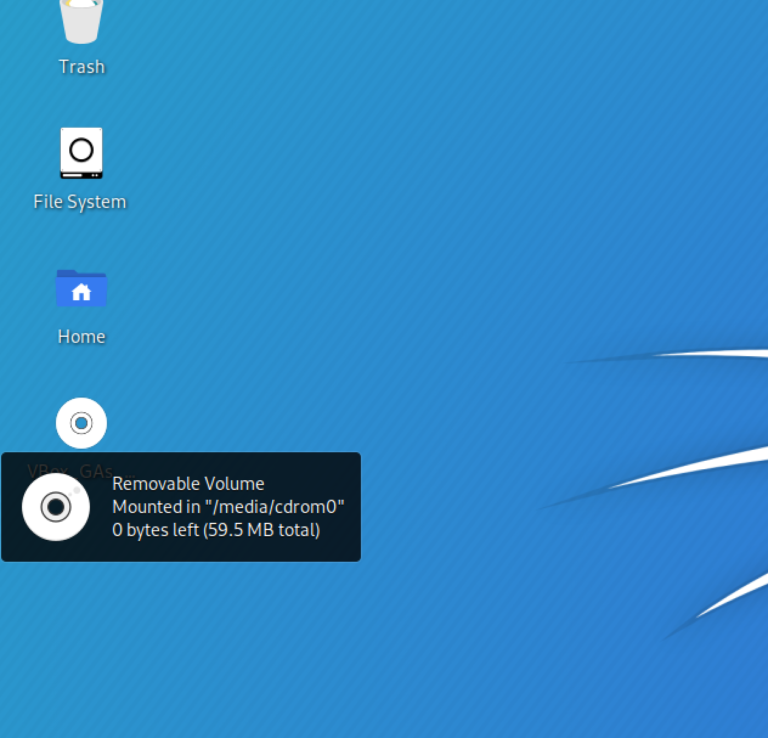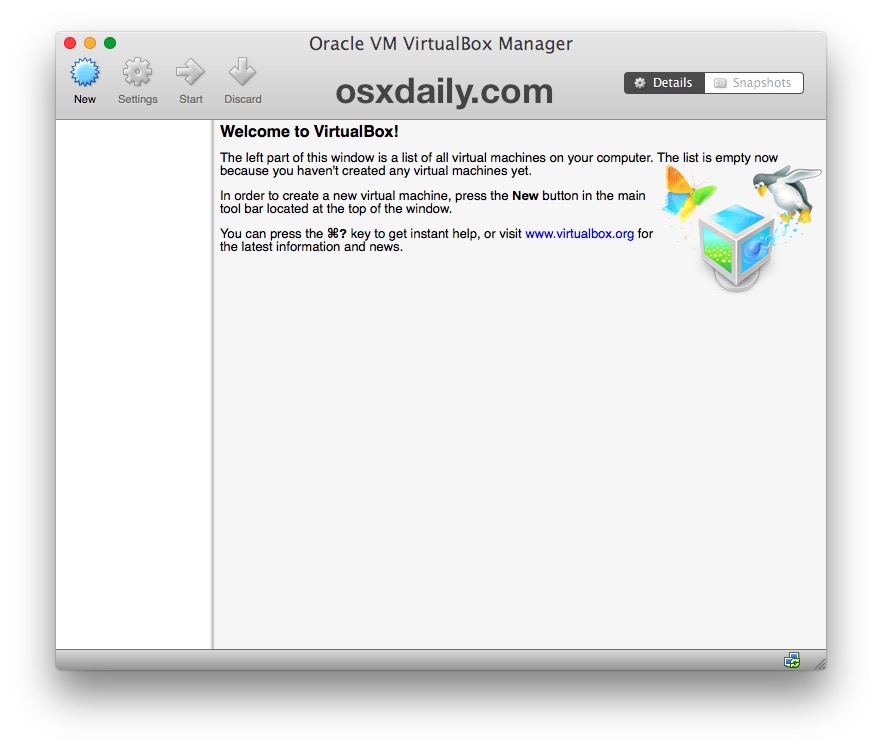- Virtualbox For Mac Retina Software
- Virtualbox Mac Retina Slow
- Virtualbox Mac Retina Resolution
- Virtualbox For Mac Retina Download
This is a very quick how-to on how to install VirtualBox on OSX. This lesson was created in June, 2014 and I’m running OSX 10.8 (Mountain Lion). I’m going to show you how to download and install VirtualBox 4.3.12 for OS X hosts. You may want to check out lesson 2 and lesson 3 also. Thanks!

Get the two software packages that you need
- Visit http://www.virtualbox.org/wiki/Downloads
- Click on the link for OS X hosts.
- This will bring up a download window with a filename similar to “VirtualBox-4.3.12-93733-OSX.dmg”.
- Save the file some place where you will be able to find it later.
- The file is fairly small; only about 120MB on my computer.
- Next, click on the “All supported platforms” link next to “VirtualBox 4.3.12 Oracle VM VirtualBox Extension Pack” and save that file to the same location.
Confirm that you have the two packages that you need
Once you are done, check in the Finder and confirm that you have the two packages that you need. On my Mac, the display looks something like this. Of course, yours may look somewhat different depending on the way you have set Finder to display files.
- VirtualBox is free, open-source, and works well for developers and hobbyists, but it's less ideal for anyone who wants to seamlessly run Windows and Linux apps on a Mac.
- Install Mac OS X 10.4 Tiger on VirtualBox Prerequisites. This guide assumes that you have: a Mac OS X host environment, running VirtualBox on an Intel Mac; a universal or i386 install image or disk for Mac OS X 10.4 Tiger; The environment of the example installation procedure was: MacBook Pro (Retina, 15-inch, Mid 2014) OS X El Capitan (10.11.6).
Apple has been marketing the retina displays, but it's not actually implementing those resolutions. For example, and depending on your Display settings, the effective resolutions you're going to get are: 1) 1680x1050, 2) 1440x900, and 3) 1024x640 pixels. The default screen resolution for Mac OS X VirtualBox Guest is 1024×768. Below shows how to change the screen resolution of Mac OS VirtualBox guest running on Windows 10. Open “Command Prompt”. (press Win + x and select “Command Prompt”) 2. Navigate to VirtualBox folder in which “VBoxManage.exe” resides.
Mount the VirtualBox disk image to start the installation process

- Double-click on the disk image file “VirtualBox-4….dmg” to mount or open the image so that you can see what is inside of it.
- Note that the user manual comes as a PDF. VirtualBox does not have context-sensitive help. Instead, it comes with this PDF. It’s easy to forget to make a copy of the PDF during the installation process, but you may need it later, so drag the UserManual.pdf to your Desktop. You may want to rename it something like “VB manual.pdf.” If you are not a manual person, you can get to it online as well.
- Double-click on the VirtualBox.pkg file to launch the actual installer.
Install the VirtualBox program
- Double-click on the VirtualBox.pkg file to launch the actual installation.
- Click Continue as prompted and then click “Install.” You will probably be prompted for your OSX administrative account password to enable the installation to proceed.
- Enter the password to continue.
- Click on “Install Software.”
- On my MacBook Air, this took about one minute and I received a message saying that “The installation was successful.”
- Click Close.
Start the application and install the extension pack
- Switch into your Applications folder in the Finder.
- Locate VirtualBox and double-click on the application.
- It should launch and, with luck, you won’t see any errors.
- The very first thing you need to do is to install the extension pack. Without the extension, you won’t have access to a number of useful features.
- Click on VirtualBox > Preferences (or use the keyboard shortcut Cmd-,) . Then click on “Extensions” in the top bar (#1 above).
- Now, click on the blue square with the yellow dropdown symbol (#2 above)
- This will bring up a file navigator – navigate to the location where you saved the extension pack and select it.
- You’ll see a warning message. Read it and click Install.
- You’ll have to read (or at least scroll through) a long Oracle license agreement, before you can click OK or similar.
- You’ll be prompted for your local administrator password. Enter it and click to proceed.
- The installation will complete.
- You should be able to click “OK” to leave the VirtualBox preferences screen.
That’s it! Now you’re ready to install a virtual machine.

You don’t have any money left to buy Parallels or Fusion so you are stuck up with Virtual box for the time being. Virtual box unfortunately does not provide a support for retina displays (At the time of writing thisdocument).
You will keep trying out different resolutions and will still not be satisfied because sometimes the content would be too stretched in the horizontal direction and sometimes in the vertical direction. You might then have to use a really low resolution which would look and feel pathetic!

So here are some steps that you could try out to improve your user experience with Virtual Box till the time they don’t provide you with actual retinasupport.
Step 1.Determine the number of pixels on your screen. For e.g.- Mac pro 13” and 15” Retina have 2560 by 1600pixels.
Virtualbox For Mac Retina Software
Step 2.The VM will respect the resolutions properly only in Scale mode. In scale mode the VM is viewed in a window. A window will not take-up the complete screen. So you need to get the maximum size that a window can take up on your screen (Without going into fullscreenmode).
What I really mean by that statement is - out of the 2560x1400 px of real estate available on the screen only 2560x700 px can be used by a window to show content. Why ? Because I have a dock at the bottom and a menu bar at the top which takes up some space vertically. So in this step you need to calculate that space. Here is how I didit.
I personally used the ⌘ + ⇧ + 4 button to take a snapshot of the window and then see the resolution of the image file. So in my particular case I have the dock in the bottom so I need to compromise the height of the screen. Rounding off to the nearest integer the available real estate of a window comes out to be2560x1400.
Virtualbox Mac Retina Slow
Step 3.Now you need to setup this custom resolution on your VM. So keep the VM on and run the following command on yourterminal
Virtualbox Mac Retina Resolution
For e.g. if you want to try this on a mac pro 13”retina
Step 4.This would be a really high resolution and you will not be able to read anything on the VM because the text would be really small. So now go to your VM with win7 installed and follow these steps-
- Open display settings.
- Click on [Set custom size DPI] from the right hand side NavigationBar.
- Scale the font size to200%.
- Click ok, Log off and Loginagain.
Virtualbox For Mac Retina Download
Voila! you will definitely have a better Win7 experience on Macnow.